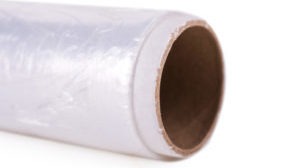Material selection is a key factor for many aspects of your injection molded part or product. It affects some or all of the following, in most cases: the physical properties of the product, its look, its operation, its interaction with other materials and components, and its durability. On top of all that, material selection can play a big role in your material and production costs, and their subsequent effects on your bottom line. Taking all of those factors into consideration, it’s clear that choosing a material for your injection molded product should not be taken lightly.
Before you really get down to the nitty-gritty of choosing a material, however, you have a bigger-picture choice to make. Plastic substrates for injection molding fall under two general categories: thermoplastic elastomers (TPE) and thermoset elastomers. While there are a number of differences between the two, the key, broad differentiator between them is that TPE plastics liquefy upon heating, and harden upon cooling — and that this process can be repeated again and again (up to a point). Thermoset plastics, on the other hand, harden and strengthen when heated (or “cured”) to a certain point, and they remain in that solidified state regardless of additional heat application. A good rule of thumb to remember the difference? Thermo”set” plastics are “set” permanently.
Between TPE and thermosets, one material is not inherently better than the other. Your needs, budget and product really dictate the best choice for you (as is typically the case in manufacturing in general). Choosing TPE injection molding can provide a number of great benefits, and today we’ll take a look at those, and some guidelines to help you achieve success in your production with thermoplastic elastomers.
Know the Physical Properties of TPE
Now that you know the big-picture unique aspect of TPE — that it liquefies upon heating and solidifies upon cooling — we can detail a bit more about exactly how thermoplastics operate in service. In general, thermoplastics are highly flexible materials that also exhibit excellent tensile strength. In other words, they can stretch and flex to a fairly high degree while returning to their original form and remaining intact, without tearing.

A good example of a TPE product is thin packaging film. As a wrapping material, it can be tightly and efficiently fitted around a product, without the need for a great degree of delicacy or care (to prevent tearing during wrapping). In transit, it typically remains intact. As anyone who has opened a shrink-wrapped box lately knows, it’s not as easy to break through that plastic as one might think — it takes a bit of elbow grease (or scissors).
Thermoplastics also have good durability under high or low temperatures (though not extreme temperatures, due to their property of liquefying at higher temperatures). As an injection molding material, the molecular makeup of TPE gives it a good viscosity and flow rate, making it very suitable for the process.
Understand the Various Applications of TPE
More flexible TPEs are increasingly being used as additives for those that fall at the less flexible end of the spectrum, in order to provide more customized physical properties. For instance, a more flexible TPE can give a bit of spring or a “softer” feel to a consumer product that might otherwise be unsuitably rigid. (“Softer” in quotes as the concepts of “hardness” and “softness” are measurable physical properties of these types of materials. In this case, the concept would apply more to the subjective tactile experience for the end user rather than a measured material property.)
Learn the Best-Use Cases for TPE
A major benefit of thermoplastics is that they lend themselves to broad latitude in design flexibility and optimization due to their good viscosity and flow. While injection molding design best practices should still be followed, and TPEs aren’t a “solve-all” for creating sharp corners or sharp changes in wall thickness, they do allow for a bit more wiggle room as far as design goes.
Process-wise, TPEs are suitable for many types of injection molding, including reciprocating screw molding, blow molding and hot runner molding.
Take Advantage of TPE’s Recyclability
One of the biggest threats to your bottom line can come from wasted material in the injection molding process. After making the major capital investment in raw material for your product, it’s important to be as efficient with it as possible. This is where the ability to heat and reliquefy TPE plays a huge role. During the injection process, material inevitably gets left behind in runner, sprues, screws and elsewhere as it travels to the mold cavity. With materials like thermosets, once that material hardens, it cannot be used again — it’s simply discarded as waste.
With thermoplastics, however, that “waste” can be reheated and then collected and returned to your raw material “pot,” able to be used for further part production. This ability can cut your waste to nearly zero (although there is a limit to how many times TPE can be reheated), giving you the maximum efficiency and benefit from your material choice.

Moreover, that quality of TPE provides increased environmental benefits, whether as a result of less waste, or the ability of products made from TPE (like plastic bottles) to be recycled. In fact, in many cases, TPE use is required for certain products so as to enable them to be recycled and reclaimed.
Know Where TPE Can Help Your Bottom Line
We just discussed how efficient it can be to use TPE and reclaim waste from the process to be re-used. TPE provides a number of other benefits to your investment as well — some direct and some indirect. TPE injection molding cycle times are typically much faster than thermosets, for instance, allowing you to produce more product faster, speeding your time to market. TPE also generally uses less energy, as the friction of the substrate raw material being injected into the machine helps to heat and liquefy it, requiring less energy than required for, say, the heating/curing process for thermosets. Finally, TPE can usually be processed “as-is,” without the numerous additives or other supplemental materials that can be required for thermoset processing.
Keep the above factors in mind as you choose the material for your next (or current) injection molded product, in order to see the most benefit from the choices you have.



